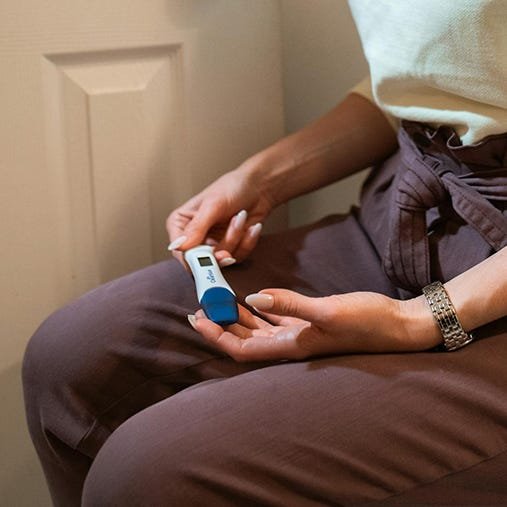If you're trying to conceive or have recently missed a period, you may be wondering about implantation bleeding. This type of bleeding can be a little confusing and sometimes mistaken for a menstrual period.
In this blog post, we'll cover everything you need to know about implantation bleeding, including what it is, what it looks like, and when it typically occurs. We'll also discuss the difference between implantation bleeding and other types of vaginal bleeding, and when you should talk to your doctor about any concerns.
What is implantation bleeding?
Implantation bleeding happens when a fertilized egg (embryo) attaches to the lining of the uterus.
It's often characterized by light spotting and is caused by the blood vessels in your uterus bleeding when the embryo implants.
What does implantation bleeding look like?
Implantation bleeding typically involves a small amount of spotting that can range from light pink to a rusty color. This light bleeding can last between a few hours to up to four days and is sometimes accompanied by other implantation symptoms.
You may notice light traces of blood in your panties, on a sanitary pad, or on the paper when you wipe after going to the bathroom.
When does implantation bleeding occur?
Implantation bleeding typically happens around seven to 15 days after conception and lasts for a few days.
You may find that it happens around the time you'd expect your period if you have a regular, 28-day cycle, but it'll be much lighter than menstrual bleeding.
Is it implantation bleeding or a period?
Implantation bleeding is usually much lighter than a usual period and can be accompanied by some other early pregnancy symptoms which can help you. If you usually have light or irregular periods, the following points may help you differentiate between the two.
| |
Implantation bleeding |
Menstrual bleeding |
| Duration |
1-4 days |
4-7 days |
| Blood flow |
Light or spotting |
Heavier |
| Blood colour |
Light pink or dark brown |
Bright red |
| Cramping |
Light and doesn't increase in intensity |
Heavier and lasts longer |
| Other symptoms |
Nausea |
Breakouts, bloating and PMS |
| Pregnancy test result |
Positive |
Negative |
Is implantation bleeding common?
Implantation bleeding happens in 15 to 25% of early pregnancies, and not all pregnant people experience implantation bleeding, so if you haven't noticed any symptoms yet, this doesn't mean you're not pregnant.
If you do not see any bleeding, it is not a sure sign that you are not pregnant.
When should I get checked if I am bleeding in early pregnancy?
Light bleeding or spotting in early pregnancy is common, but any implantation bleeding that you experience should be short-lived.
If you know you're pregnant and are experiencing heavy bleeding it could be a sign of something more serious (like a miscarriage, ectopic pregnancy, or an infection), so it's best to talk to your doctor about any bleeding you experience at any stage of pregnancy if you're feeling concerned.









